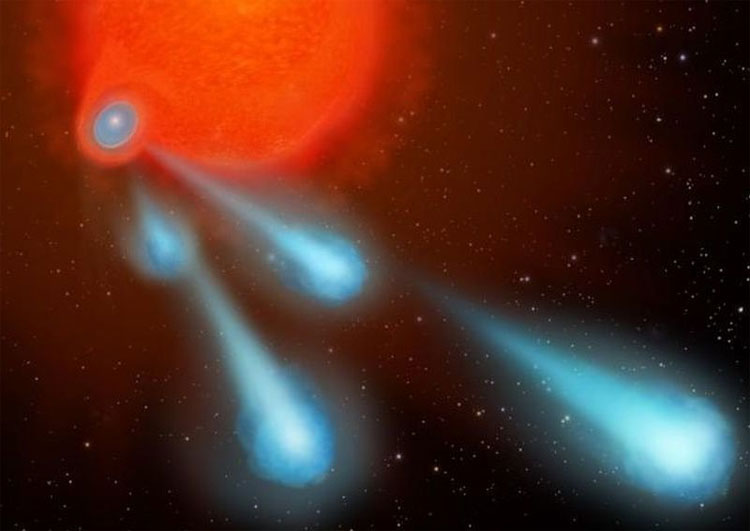Superheated plasma balls emanating from the dying star
Scientists discover giant plasma spheres that are launched at lightning speed near a dying star.
NASA's Aerospace Hubble Space Telescope (NASA) found plasma spheres (superheated ionized gas) about twice the size of Mars emitted near the dying red giant V Hydrae , Sci News reported on October 7.
These plasma spheres move through space at very fast speeds, taking only about 30 minutes to travel the Earth to the Moon. They appear on average every 8.5 years for at least 400 years.

Mysterious plasma spheres are launched near the star V Hydrae.(Photo: NASA).
V Hydrae changes the brightness periodically in the constellation Hydra, about 1,200 light-years from the Sun. V Hydrae's atmosphere contains more carbon than oxygen. According to astronomers, V Hydrae lost half the mass into space during the process of death.
Dr. Raghvendra Sahai and colleagues at NASA's Jet Propulsion Laboratory (JPL) used Hubble Spectroscopy to observe V Hydrae between 2002 and 2013. The research team delivered show a huge chain of plasma balloons in the area around V Hydrae. They have a temperature of about 9,400 degrees Celsius, nearly double the solar surface's heat.
The most logical explanation for today's plasma spheres is that they are ejected from a companion companion with V Hydrae in binary star systems. It follows an elliptical orbit around the main star V Hydrae for a period of 8.5 years. It attracts V Hydrae's material, forming a disk of surrounding material. This is the "launch pad" for plasma balls flying at 800,000 km / h.
"This star system can be a prototype to explain many of the brilliant glowing shapes observed by the Hubble Telescope around dying stars, called planetary nebulae , " Sahai said. " Planetary nebula is a glowing glowing shell of gas, extending from a star in the final stages of life. This is the first time we've seen this process happen."
- Beautiful sight of a dying star
- How will the sun of the solar system die?
- The superheated rock
- Revealing the image of the Sun when destroyed
- Close up of dead star
- The Hubble Space Telescope records images of dying stars
- Just appeared solar storm
- Why the 'dead body' exploded many times over 50 years
- Superheated helium balloons,
- Camera balls allow you to take 360-degree photos
- Earth often leaks plasma out of space
- The 'dying' of the largest star in the universe
 Van Allen's belt and evidence that the Apollo 11 mission to the Moon was myth
Van Allen's belt and evidence that the Apollo 11 mission to the Moon was myth The levels of civilization in the universe (Kardashev scale)
The levels of civilization in the universe (Kardashev scale) Today Mars, the sun and the Earth are aligned
Today Mars, the sun and the Earth are aligned The Amazon owner announced a secret plan to build a space base for thousands of people
The Amazon owner announced a secret plan to build a space base for thousands of people